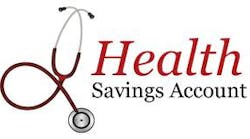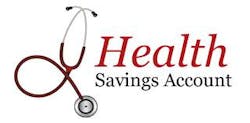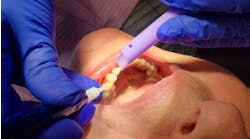Reprinted with permission from The McGill Advisory
HSAs are still alive and well under Obamacare, with many HSA compatible policies available on the Exchanges. In order to open a HSA, doctors must be covered under a qualifying high deductible plan (at least $1,250 for an individual policy, and $2,500 for a family policy). While many doctors have switched to HSA compatible plans over the past few years (26% of doctors now compared to just 12% in our 2010 survey), others have balked because they feel the meager premium savings don’t justify the hassle of changing plans. That’s not the point!
Funds that are not used to pay for out-of-pocket medical expenses (deductible, copayments, etc.) can be invested in stocks, bonds, and mutual funds, growing and compounding tax-free. Best of all, distributions used to cover medical expenses are totally tax-free! That makes HSAs a much more powerful tax saving tool than retirement plans, where all distributions are taxed at ordinary income rates, or even Roth IRAs, where contributions cannot be made on a tax-deductible basis.
Sytz says the majority of the 9 million Americans using HSAs have plenty of medical bills, and they make HSA withdrawals to cover them just about as fast as they are funded. But, Sytz recommends a different approach to his client base of 485 high-income doctors, advising them to pay medical bills personally, and let the HSA balance grow and compound as a tax shelter, like a mini retirement plan. Since HSAs have been around for nearly a decade, he has many clients with HSA balances over $50,000, and a few arereaching $100,000 already. Since tax-deductible contributions are allowed up to age 65, when Medicare kicks in, some doctors can end up with account balances of hundreds of thousands of dollars.
That’s when the fun starts, says Sytz. Funds withdrawn at any time to pay for out-of-pocket medical expenses are tax-free. Ditto for the cost of supplemental health insurance premiums, long-term care premiums, and premiums on Medicare and Medigap policies paid in retirement (after 65).
Sytz has discovered a hidden tax loophole that can dramatically increase doctors’ tax-free HSA withdrawals. The so-called “lookback loophole” allows doctors to pull out tax-free withdrawals in amounts equal to medical expenses from all prior years, as long as the doctor didn’t deduct these as an itemized deduction on his or her personal income tax return. This medical expense deduction is out of reach for virtually all doctors, since it is allowed only to the extent that medical expense receipts exceed 10% of the doctor’s adjusted gross income (7.5% of adjusted gross income for doctors 65 or older). The ability to make retroactive claims means that doctors with good records can dramatically increase their tax-free HSA withdrawals. Sytz advises his clients to scan or store all medical expense receipts not previously paid or reimbursed through the HSA. At retirement, doctors can whip them out and make tax-free HSA withdrawals in amounts equal to the cumulative medical bills, completely tax-free!
What if, through good fortune, the doctor’s HSA balance exceeds his cumulative medical bills? Sytz says that’s a good problem to have. These excess HSA funds can be withdrawn at any time, but are taxed at ordinary income rates, just like other retirement plan accounts. Withdrawals prior to 65 for non-medical purposes are also hit with a 10% penalty.
Sytz says there’s another bonus to HSA funding. Rather than leaving large amounts of cash sitting uninvested, doctors can use their HSA account as an emergency fund. This is because they can withdraw amounts equal to their cumulative medical bills out of the HSA tax-free at any time. Sytz says that Roth IRAs are another commonly overlooked emergency fund since the cumulative amount contributed (but not earnings) can also be withdrawn at any time tax-free.
However, since withdrawals from these two accounts can’t be put back in, Sytz recommends using a home equity line of credit (HELOC) for an emergency fund, thereby allowing all of the doctor’s cash to be invested. Doctors following his advice profited handsomely in 2013, since $200,000 in emergency funds invested in a balanced mutual fund returned over $30,000 in earnings last year, well above the $1.25 that most doctors earned on the same amount invested in their checking or savings accounts. Sytz stresses that in these tough times, doctors can’t get ahead leaving that much money behind.
ALSO FROM MCGILL ADVISORY:Strategies to control labor costs in your dental practice
This article was reprinted with permission from The McGill Advisory, a monthly newsletter with online resources devoted to tax, financial planning, investments, and practice management matters exclusively for the dental profession, published by John K. McGill & Company, Inc. Visit mcgillhillgroup.com, or call the newsletter department at 888-249-7537 for more information.







